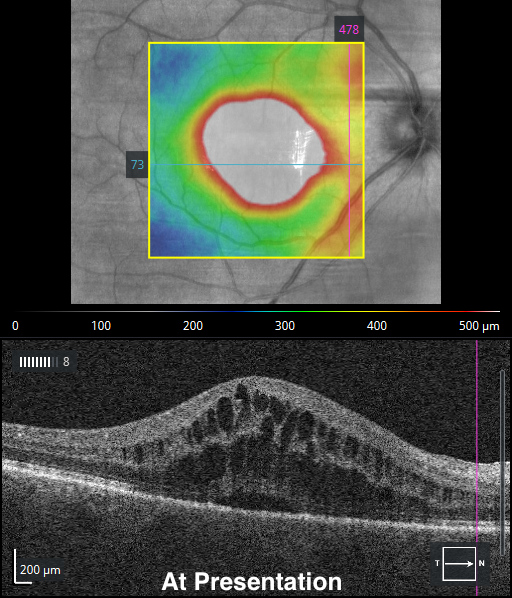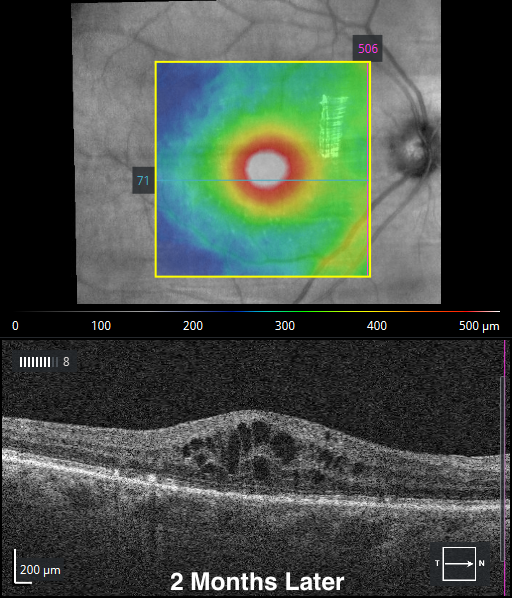From our Sept 8, 2016 newsletter.
Big news from EyeCarePD! We’ve just released a learning platform to help eye care practitioners hone their macular OCT interpretation skills. Try it out!Treating postoperative cystoid macular edema
After cataract surgery, cystoid macular edema (CME) periodically occurs—even after a “perfect” surgery. How we treat this problem has changed over time.Then…
The treatment of postop CME used to involve topical prednisolone and topical ketorolac eye drops. However, the resolution of the issue under this regimen was variable, and many specialists elected to add intravitreal injections of steroid medications (such as triamcinolone).And now…
In the modern era, there’s a reduced need for intravitreal injections in cases of postop CME. Why? Because many patients respond quite well to newer-generation topical nonsteroidals.In the case below, the patient presented with a six-month history of untreated postop CME (historically, clinically, OCT and angiographically confirmed). With topical nepafenac alone, there was significant resolution of the CME.
To each their own therapy
As you know, every patient’s circumstance is unique, which is why each person requires individualized therapy—and only you can decide what’s best for each patient at a given point in time. When making decisions, it’s important to remember that the historical perspective of therapeutic progression is important.Tip: Look out for “empty cysts” to prevent overtreatment.
“Empty cysts”, which are defined as ovoid structures with low internal reflectivity and prominent septae separating each cyst, are commonly seen in cases of postop CME. In the case discussed above, there’s a progressive resolution of subretinal fluid and cystoid size. However, in the final image, there are still persistent ovoid spaces in this retina, which is relatively flat. While this may represent persistent CME, to prevent overtreatment, it’s important to consider that it might be cystoid degeneration (represented by ovoid spaces on OCT imaging that do not leak dye on fluorescein testing).Would you like to be able to read macular OCT images like an expert?
Check out the free trial of INTERPRET: Macular OCT and let us know what you think!Always learning,
The EyeCarePD Team
A Clear Vision for Professional Development
Elevate your eye care skills with image-rich content and relevant case examples that empower you to treat patients more effectively.
Send this Newsletter to a Friend

